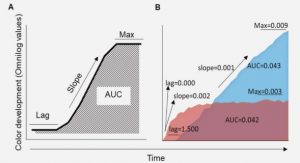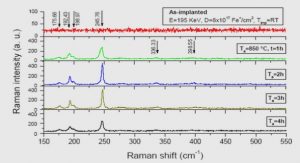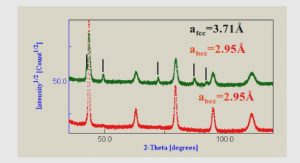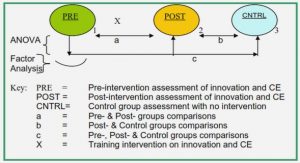Get Complete Project Material File(s) Now! »
Chapter 3: Study One Stability Over a One Month Period of Self-Rating Measures of Disease Severity and Impact in a Clinical Sample of Adults with Parkinson’s Disease
Abstract
Background:
PD has a range of motor and non-motor effects that vary in severity across people and can be associated with cognitive impairment and voice problems that impact on quality of life (QoL) and can have negative effects on wellbeing including depression, anxiety and stress. How participants perceive symptom change, symptom severity and quality of life are other outcomes are important factors in a clinical study. Accurate information on how medications and therapy affect symptomatology are also important when deciding on clinical management. Therefore, reliable measures with which to assess participant perceptions are needed. There are published measures with established reliability that have been used for people with PD, but none of these studies were conducted in New Zealand. Also, none of these studies looked at the reliability and acceptability of performing all of these measures together as part of a 45 minute test battery.
Objectives: To determine if the measures are internally reliable, acceptable and feasible, reliable across participants, sensitive to the effects of PD and show stability over time. To investigate the association between self-report measures of the participant’s motor and non-motor effects on general function (activities of daily living, ADLs), cognition, the participant’s (and their partner’s) perception of the impact of voice difficulties and the association between the severity of motor and non-motor severity and wellbeing (depression, anxiety, stress) and QoL.
Methods: Participants with PD (N = 36) receiving usual PD care completed four self-report measures on two test occasions separated by an interval of one month. Cognition and partner perceptions of voice handicap were also assessed. Measures used were the Movement Disorder Society-Revision of the Unified Parkinson’s Disease Rating Scale (MDS-UPDRS) Part I (non-motor Experiences of Daily living) and Part 2 (Motor Experiences of Daily Living); Voice Handicap Index-10 (VHI-10) and VHI-10 Partner version (n = 32) (VHI-10P) to obtain information on the person’s and their partner’s perception of the person’s voice; the Depression, Anxiety and Stress Scale (DASS-21); the Parkinson’s disease Questionnaire-8 (PDQ-8) to measure PD related QoL, Cognition was assessed by the researcher using the Addenbrookes Cognitive Assessment-III, NZ Version A (ACE-lll). A semi structured qualitative interview was conducted on the second test occasion to obtain the participants’ perception of symptom change, the measures used and acceptability of the study process.
Results: Cronbach’s alpha measures of internal reliability were good to excellent for all measures. Analysis of intra subject reliability showed significant changes between the first and second test occasions for a few measures; ACE-III scores increased (better cognitive score) and PDQ-8 and VHI-10 scores reduced (less self-reported difficulty). VHI-10 ratings were correlated with the VHI-10P partner ratings. There were no statistically significant differences in self-report questionnaire outcomes between participants who were above (n = 10 ‘healthy’; ACE-lll scores 89 to 100) versus below (n = 26 ‘risk’, ACE-lll scores 88 and lower) the SACE-lll cutoff for ‘cognitive risk’. Qualitative data showed that participants were happy with what they perceived as a natural, relaxed experience; they noted the comfort, timing and convenience of the assessment process and reported the process and measures were acceptable and relevant to people with PD.
Conclusion: Internal reliability of the self-report measures largely reflect published findings for the measures, i.e. α > .9 and .8 (optimal). There was no statistically significant difference in self-reported measures outcomes between the ‘healthy’ and ‘cognitive risk’ groups, suggesting that ACE-lll cognition scores need not be an exclusion criterion for further studies using the MDS-UPDRS, DASS-21, VHI-10/VHI-10P or DPQ-8 as outcome measures for participants with PD. Qualitative data showed that 31% (n = 12) of participants reported concern with regard to health professionals adjusting the dosage or timings of their anti-PD medications during the test period. Overall, the participants reported satisfaction with the relaxed experience and comfort of completing the questionnaires in their homes. Participants rated the timing and convenience of the process as manageable and not tiring and thought the process and the measures used were acceptable and relevant to PD.
Keywords: Parkinson’s disease, self-report, reliability, quality of life, depression, anxiety, stress, voice, cognition
Background
Current research is recognising and building our understanding of the ‘alterations’ caused by PD and how they can impact upon social communication skills and quality of life (QoL) (Uitti, 2012). There are four cardinal features (system complex) of PD often grouped under the acronym TRAP: Tremor at rest, Rigidity, Akinesia (or bradykinesia) and Postural instability. In addition, flexed posture and freezing (motor blocks) have been included among classic features of PD (Jankovic, 2008). Equally disabling is the bulbar dysfunction manifested by hypokinetic dysarthria, hypophonia, dysphagia and sialorrhoea; symptoms that are thought to be related to orofacial–laryngeal bradykinesia and rigidity that are frequently observed in people with PD (Martino et al., 2016).
The speech characteristics associated with hypokinetic dysarthria reflect the general pattern of hypokinetic motor disorder characterised by a marked reduction in amplitude of voluntary movements, slowness of movement, movement initiation and rigidity (Murdoch, 2010). Perceptual speech characteristics of hypokinetic dysarthria include mono pitch, mono loudness and reduced stress, all of which represent alterations in the prosodic aspects of speech (Walsh et al., 2001; Allen et al., 2012; Pell et al., 2006).
Most people with PD (70% to 75%) will have such speech difficulties affecting their QoL by restricting the ability and readiness of the person to partake in conversation (Di Benedetto et al., 2009; Skodda et al., 2011). More severe motor symptoms and non-motor symptoms (NMS), which include anxiety and depression, almost inevitably emerge with disease progression (Chaudhuri et al., 2006). NMS tend to dominate the clinical presentation of PD in the later stages of its progression contributing to increased severity of disability and impact on QoL (Buetow et al., 2013; Chaudhuri et al., 2006; Santos-García & de la Fuente-Fernández, 2013). NMS frequently remain unreported unless specifically investigated, with the relative contribution of motor and non-motor symptoms to QoL and wellbeing remaining unclear (Hinnell, Hurt, Landau, Brown, & Samuel, 2012).
Pharmacological treatment to relieve the motor symptoms and improve physical functioning are largely designed to replenish decreased levels of dopamine in the brain (Buetow et al., 2013). However, loss of dopamine alone cannot explain many of the disabling, NMS of PD such as cognitive impairment and low mood (Buetow et al., 2013; Martinez‐Martin et al., 2011).
People with PD experience clinically significant anxiety which, although sometimes presenting in isolation, frequently coexist with depression. A study of 1351 people with PD without dementia found that the most frequently observed neuropsychiatric symptoms were depression (70%), anxiety (69%) and apathy (48%), with 87% of subjects having at least one neuropsychiatric symptom (Kulisevsky et al., 2008). A systematic meta-analysis of 36 papers found the prevalence of clinically depressive symptoms to be 35% for the PD population (Reijnders, Ehrt, Weber, Aarsland, & Leentjens, 2008). Prevalence of anxiety and depression “exceeds both the prevalence in the general population and in individuals with chronic medical conditions (Stefanova et al., 2013). Panic disorder, generalised anxiety disorder and social phobia were the most common anxiety disorders reported”, with females nearly three times more susceptible to anxiety than males with PD (Stefanova et al., 2013).
Motor and cognitive symptoms are diverse in people with PD and it is not clear which have greatest impact on ADLs (Cahn et al., 1998). Mild cognitive impairment (MCI) is now recognised to be a relatively common and heterogeneous disorder in PD, with certain subtypes predicting progression to PD dementia (Yarnall, Rochester, & Burn, 2013). Dementia is a frequent and distressing complication of PD with a cumulative incidence approaching 80% in community-based studies (Hely et al., 2008). People with PD become more dependent upon caregivers as motor and cognitive disabilities increasingly interfere with their ability to carry out activities of daily living (ADLs). Ascertaining subtypes and predicting MCI progression was the aim of the Movement Disorder Society (MDS) who commissioned a task force to evaluate the literature and propose criteria for the diagnosis of MCI in PD (PD-MCI) (Appendix 2). The MDS developed specific diagnostic criteria based on a raft of assessments: the Montreal Cognitive Assessment (MoCA); Scales for Outcomes of Parkinson’s disease Cognition (SCOPA-COG); PD Cognitive Rating Scale (CRS PD); Mattis Dementia Rating Scale (MDRS) (Yarnall, Rochester, & Burn, 2013).
The primary objectives of this study were to determine if self-reported measures of symptom severity, QoL, wellbeing and voice quality are internally reliable, acceptable and feasible, reliable across participant, sensitive to the effects of PD and show stability over time in a clinical sample of people with PD. The agreement between the participant and their partner’s perception of their voice quality was also determined. Motor and non-motor effects on general function (activities of daily living ADLs) were measured using the MDS-UPDRS and the association between participants’ cognitive status and the self-report measures was determined to assess whether ‘cognitive risk’ precludes the use of the self-report measure.
Chapter 1 – Introduction
1.1 Preamble
1.2 Current and Potential Interventions
1.3 Aims of the Thesis
Chapter 2 – Parkinson’s disease clinical features
2.1 Summary Overview
2.2 Parkinson’s disease
2.3 Motor Symptoms
2.4 Hypokinetic Dysarthria
2.5 Non-Motor Symptoms
2.6 Epidemiology
2.7 Pharmacological Therapeutic Intervention for Motor Symptoms
2.8 Pharmacological Therapeutic Intervention for Non-Motor Symptoms (NMS)
2.9 Non-Pharmacological Therapeutic Intervention for Motor and NMS
Chapter 3 – Study One
3.1 Abstract
3.2 Background
3.3 Method
3.4 Results
3.5 Discussion
3.6 Limitations
3.7 Conclusions
Chapter 4 – Group Singing
4.1 Group Singing and the Collaborative Community
4.2 Group Singing as an Intervention to Improve Wellbeing
4.3 Entrainment of Behaviour
4.4 Gender Related Patterns of Wellbeing
4.5 Group Singing and the Non-Motor Symptoms Associated with PD.
4.6 Quality of Life
4.7 Anxiety and Depression
4.8 Meaningful Pursuits and Personal Fulfillment
4.9 Neuro-Rehabilitation
4.10 Motor Speech Difficulties and Group Singing
4.11 Literature Review on PD Group Singing
Chapter 5 – An SLT and musician’s perspective – A rationale for song choice and exercise; a determinant central to efficacy?
5.1 Background
5.2 Background – The Brainwave Singers Choir
5.3 Intervention and Voice
5.4 Wellbeing
5.5 Therapeutic Singing
5.6 Feedback and Amplitude
5.7 Brainwave Singers Session Format
5.8 Benefits of Live Musical Accompaniment
5.9 Song and Repertoire Selection
5.10 Song Parameters That Need Consideration
5.11 Word/Syllable Count (Diadochokinesis)
5.12 Conclusion
Chapter 6 – Study Two
6.1 Introduction
6.2 Treatment Dosage
6.3Description of Acoustic and Respiratory Variables
6.5 Hypothesis
Chapter 7 – Study Two Method
7.1 Study Design
7.2 Inclusion and Exclusion Criteria
7.3 Participant Recruitment
7.4 Randomisation
7.5 Pre-Trial Participant Withdrawal
7.6 Characteristics of Participants
7.7 Instrumental Voice Assessment
7.8 Aerodynamic Analysis
7.9 Sound Pressure Levels (SPL)
7.10 Self-report Questionnaire
7.11 Face to Face Assessment Session
7.12 Home Voice Maintenance Programme – Pilot
7.13 Treatment Duration and Data Collection
7.14 Home Voice Maintenance Programme
7.15 Music Group (control) Activity
7.16 Analysis of the Data
Chapter 8 – Results: Study Two
8.1 Data Analysis
8.2 Baseline Comparison of Locations and Interventions
8.3 Data Transformation
8.4 Within-Group Data Comparison
8.5 Self-Report Measures
8.6 Respiratory Measures
8.7 Voice
8.8 Between-Group Data Comparison
8.9 Repeated Measures ANOVA
8.10 Self-Report Measures
8.11 Voice – Sound Pressure Levels (SPL)
8.12 Voice quality – Perturbation, Pitch Range and Mean F0
8.13 Glottal Behaviour
8.14 Respiration
Chapter 9 – Results: Study Two – Participation Activity Evaluation
9.1 Social Aspects
9.2 Physical Aspects
9.3 Subjective Experiences
9.4 Choir Group
9.5 Music Group
Chapter 10 – Discussion and Conclusion
10.1 Introduction
10.2 Maximum Sustained Phonation (MSP) Sound Pressure Levels (SPL)
10.3 Maximum Sustained Phonation (MSP/s)
10.4 Reading Conversation – SPL
10.5 Comfortable Sustained Phonation (CSP) – SPL
10.6 Acoustic Measures: Reading and Conversation
10.7 Glottal Behaviour – Aerodynamic Resistance (ARES)
10.8 Vital Capacity Peak Expiratory Airflow. Forced Expiratory Volume
10.9 VHI-10 & VHI-10P
10.10 Self-Report Measures
10.11 Participant’s Evaluation of Activities
10.12 Attendance
10.13 Home Voice Maintenance Programme (HVMP)
10.14 Summary
10.15 Implications, Limitations and Future Direction
10.16 Conclusion
Appendices
GET THE COMPLETE PROJECT
Acoustic, respiratory, cognitive and wellbeing comparisons of two groups of people with Parkinson’s disease participating in voice and choral singing group therapy (VCST) versus a music appreciation activity






